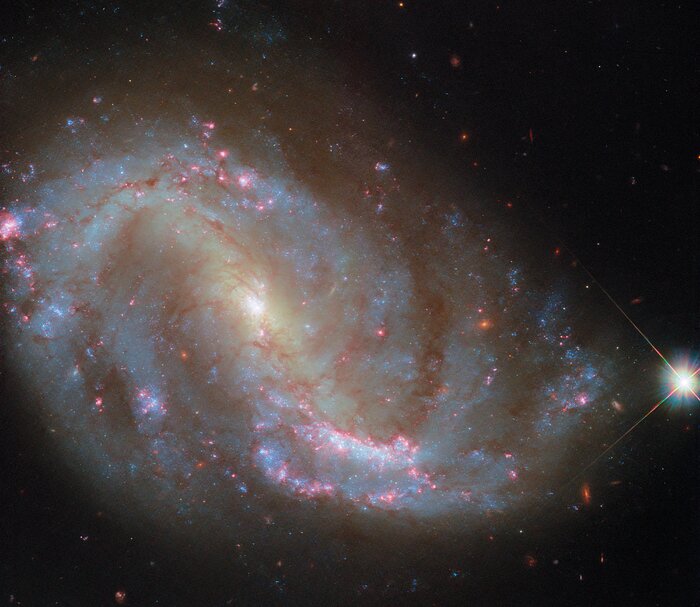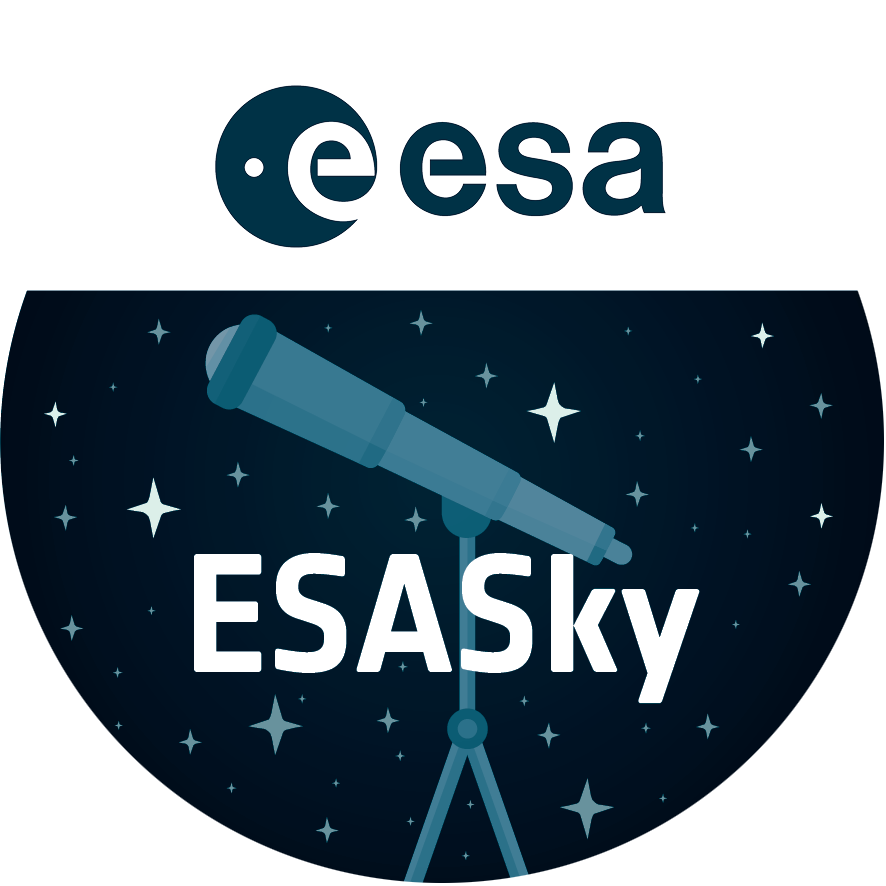A well-studied spiral
The celestial object that is displayed in this NASA/ESA Hubble Space Telescope Picture of the Week is NGC 7496, a galaxy located over 24 million light-years away in the constellation Grus (The Crane). NGC 7496 is a dusty spiral galaxy with a bar of stars stretching across its centre. Adding to its intrigue is an active galactic nucleus: a supermassive black hole that feasts on gas at the very heart of the galaxy.
Astronomers have observed NGC 7496 at wavelengths from radio to ultraviolet in order to study the galaxy’s active galactic nucleus, dust clouds, and star formation. Hubble first observed this galaxy as part of the Physics at High Angular resolution in Nearby GalaxieS (PHANGS) programme. This programme has enlisted the abilities of several powerful astronomical observatories, including the Atacama Large Millimetre/submillimetre Array (ALMA), the Very Large Telescope, and the NASA/ESA/CSA James Webb Space Telescope, in addition to Hubble. NGC 7496 was the first galaxy in the PHANGS sample that Webb observed.
Each of these observatories offers a different perspective on this well-studied galaxy. With its unique ultraviolet capabilities and fine resolution, Hubble’s view reveals young star clusters bursting with high-energy radiation. Hubble’s observations of NGC 7496 help to reveal the ages and masses of these young stars, as well as the extent to which their starlight is blocked by dust.
A previous Hubble image of NGC 7496 was released in 2022. Today’s image incorporates new data that highlight the galaxy’s star clusters, which are surrounded by glowing red clouds of hydrogen gas. Astronomers collected these data in order to study nebulae like those that massive stars leave behind when they explode as supernovae and those from which newborn stars are made.
[Image Description: A spiral galaxy featuring a bright, glowing core that is crossed by a horizontal bar of yellowish light. Spiral arms emerge from each end of this bar and wrap around it, creating a disc that is stretched out to the right. Some areas, mostly along the arms, glow pink where stars are forming in nebulae. Webs of dark reddish dust also follow the arms. A star in our galaxy shines prominently, off to the right.]
Links
Credit:ESA/Hubble & NASA, R. Chandar, J. Lee and the PHANGS-HST team
About the Image
| Id: | potw2541a |
|---|---|
| Type: | Observation |
| Release date: | 13 October 2025, 06:00 |
| Size: | 4166 x 3614 px |
About the Object
| Name: | NGC 7496 |
|---|---|
| Distance: | 24 million light years |
| Constellation: | Grus |
| Category: | Galaxies |
Image Formats
Classic Wallpapers
Coordinates
| Position (RA): | 23 9 48.19 |
|---|---|
| Position (Dec): | -43° 25' 20.81" |
| Field of view: | 2.75 x 2.38 arcminutes |
| Orientation: | North is 113.7° right of vertical |
Colours & filters
| Band | Wavelength | Telescope |
|---|---|---|
| Ultraviolet UV | 225 nm |
Hubble Space Telescope
WFC3 |
| Optical U | 336 nm |
Hubble Space Telescope
WFC3 |
| Optical B | 438 nm |
Hubble Space Telescope
WFC3 |
| Optical V | 555 nm |
Hubble Space Telescope
WFC3 |
| Optical I | 814 nm |
Hubble Space Telescope
WFC3 |
| Optical H-alpha + NII | 657 nm |
Hubble Space Telescope
WFC3 |


